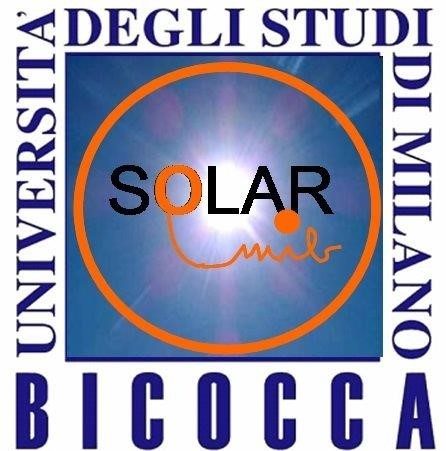 This project aims at the study and making of optimized hybrid thermoelectric – photovoltaic (HTEPV) devices for the efficient harvesting of solar energy. It is well known that common photovoltaic (PV) cells have limited efficiencies, since up to 80% of the incoming power is lost as heat. Thermoelectric generators (TEGs), which convert heat into electricity, may be used to recover such losses, enhancing the effectiveness of solar cells. More efficient PV systems can lead to a lower cost of solar harvesters, and to a wider availability and diffusion of this kind of renewable energy. In turn, this would help meet the important goal of lowering the use of fossil fuel, and reduce the emission of CO2 in the atmosphere, which has dramatic effects on climate and air quality. The overall objective of this action is the practical development of at least two kinds of HTEPV prototypes, achieving performance enhancements > 25% compared to PV stand-alone cells. This innovative kind of harvesters are made using thin film solar cells with small temperature sensitivity, a TEG part with optimized design, and a proper encapsulation to prevent heat losses.
This project aims at the study and making of optimized hybrid thermoelectric – photovoltaic (HTEPV) devices for the efficient harvesting of solar energy. It is well known that common photovoltaic (PV) cells have limited efficiencies, since up to 80% of the incoming power is lost as heat. Thermoelectric generators (TEGs), which convert heat into electricity, may be used to recover such losses, enhancing the effectiveness of solar cells. More efficient PV systems can lead to a lower cost of solar harvesters, and to a wider availability and diffusion of this kind of renewable energy. In turn, this would help meet the important goal of lowering the use of fossil fuel, and reduce the emission of CO2 in the atmosphere, which has dramatic effects on climate and air quality. The overall objective of this action is the practical development of at least two kinds of HTEPV prototypes, achieving performance enhancements > 25% compared to PV stand-alone cells. This innovative kind of harvesters are made using thin film solar cells with small temperature sensitivity, a TEG part with optimized design, and a proper encapsulation to prevent heat losses.
The following points are addressed:
- Development of a theoretical model to properly describe and predict the behavior of the PV, TEG, and HTEPV systems. This model helps finding the ideal characteristics of the solar cell, the thermoelectric material, and the TEG design to be implemented. It also help calculate the efficiency of overall HTEPV device and predict its behavior versus time under real operating conditions.
- Development of thermoelectric materials and generators optimized to be implemented in the HTEPV devices. This part of the project is aimed to select the right thermoelectric material and assembling it to fabricate the TEG systems to be implemented within the final device. Since the optimization of the TEG must be carried out accounting for the characteristics of the solar cells, several classes of solar cells are studied.
- Development and characterization of a proper encapsulation to minimize the thermal exchange between the ambient and the top surface of the HTEPV device. Since any amount of dissipated heat is a loss in terms of system efficiency, the hybrid device has to be placed in vacuum and radiative heat exchange has to be prevented by the use of a so- called heat mirror. This part of the project aims to the development of a cost-effective heat mirror, and a proper encapsulation strategy.
Project site: https://sites.google.com/site/brunosonzelorenzi/
Research team: Profs. Dario Narducci and Maurizio Acciarri (Associate Professors)

 '
'